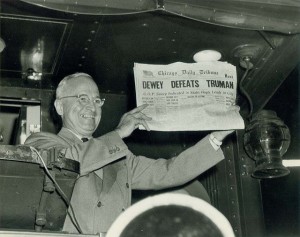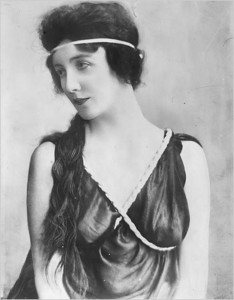Named for the great Corps of Discovery explorer William Clark, the Clark Fork finds its headwaters on the western slopes and canyons of the Beartooth Mountains in southcentral Montana, near the Wyoming border. It’s soon winding through a gently sloped high valley – so curvy that it has left Horseshoe lakes over the millennia. On its generally northwest course, the Clark soon levels out and forms the fertile (for the west) Clark Fork valley.
| The Fork wanders well over 300 miles from its furthest headwaters, reaching its terminus at a natural glacially formed lake: Lake Pent Orielle, in northern Idaho. The lake, in turn, via the river of the same name, ventures barely into British Columbia before joining the mighty Columbia, which drains into the Pacific Ocean. |
On the “other side of the mountains” are Yellowstone River feeders, such as the Clark Fork of the Yellowstone, not to be confused with Clark Fork, which is our topic here. These waters eventually reach the Gulf of Mexico via the Missouri and Mississippi.
|
Along the Clark Fork lie cities, like Missoula, and many smaller communities in Granite County, like Drummond (pop 200ish) – and the wee hamlet of Goldcreek.
Drummond was not a real settlement until 1883, when the Northern Pacific Railroad arrived. [Incidentally, it is also where the last spike on that line was hammered in].
Miniscule Goldcreek had appeared a few decades before, around 1850. A fur trapper had noted the prospects presented by a crisp creek meeting the Clark Fork at that locale. He found a few gold nuggets in the creek, but probably not enough to be profitable, for him, a lone trapper far from civilization. His business was fur trapping. But this was a secret he could not long suppress. In 1858 two brothers, James and Granville Stuart – failures in the earlier California Gold Rush – were making their way east when Granville fell ill. Too ill to make it over the mountains. They settled near the confluence of the creek and the Fork, … and started looking for gold. They found it.
By the time they had the time and equipment to build an operation, it was clear that there was money to be made here.
[Hence the name of the settlement and the creek: Goldcreek.]
In 1862 the Montana Gold Rush was on. And it affected the entire area. Enormous amounts of wealth were acquired during the rush, which lasted until 1869. As in California before, and the Yukon three decades later, most of wealth was acquired by outfitters, provision suppliers, saloons, and … probably … brothel madams.
___________________________________________________________________________
Baptiste (also sometimes Jean Baptiste and “Pomp” as a child) was ready for another adventure. In the early spring of 1866, at the age of 61, he set off from Auburn, CA for the newly found gold deposit regions, one-thousand miles away.
Nearby, in southern Idaho, similar events were unfolding. Historians prefer the Montana as Baptiste’s destination, but Idaho was certainly a possibility. Baptiste had passed through this Montana region many times, his first as an infant, when he was a mere 15 months old. He felt called to return.
He’d already enjoyed and survived one of the most adventure-filled and exciting lives in American history. Yet, he left his life of relative luxury (he’d done very well in the California gold rush) and headed north for one more adventure.
Traveling often by stagecoach – across Danner Pass, then into the parched desolation of Nevada and eastern Oregon – he and his travelmates were at about halfway on their journey, when they came to the Owyhee River; in the harsh desert, it provided a sort of Oasis. [Near modern day Rome, OR].
It’s quite likely that the 61-year-old Baptiste spent much of the journey on horseback, as he had served on and off for decades as a guide and scout in the US west. If so, he would have dismounted to guide coaches and others across the river.
During the river crossing there was some sort of serious accident. Descriptions are vague. Baptiste was pitched into the waters — still roaring and chilly from the spring runoff of the western Idaho and northern Nevada mountains.
There are no official accounts. It seems Baptiste was in the water for quite some time, perhaps getting hypothermia. He also caught a cold. It soon worsened.
Weakened and feverish, he was transported some 30 miles east, to the now nearly-a-ghost-town of Danner, OR. There lay Inskip Station. The area and station served as a support town for migrants on the Oregon Trail – with provisions, lodging and perhaps a modicum of health care: probably mostly lotions and potions. Surely no doctors.
There in Danner, on May 21, 1866, after days of delirium and suffering, our famous explorer and adventurer, passed on. How famous? Well, his image is on a US’s coin.
__________________________________________________________________
From here, I guess, it would best to go back the beginning. As Maria von Trapp says in the Sound of Music: Let’s start at the very beginning; a very good place to start.
Jean Baptiste “Pomp” arrived on February 11, 1805 in modern day North Dakota, along the Missouri River. His father, Toussaint Charbonneau was a French-Canadian fur trapper. His mother, Sacagawea, was a young native lass of about 16 years in age, and one of Charbonneau’s wives.
She’s of course well-known as one of the most important explorers in American history. She herself is more than worthy of an in-depth Bio; a bio that would fit into my “strong-woman” collection.
Here I’ll only note that, although a member of the Hidatsa Tribe, related in culture and to other northern plains tribes like the Crow and the Lakota, Sacagawea was actually Shoshone. She’d been kidnapped by the Hidasa about 4 years before. Kidnappings and such were common: beyond the need for domestic servants this was also a means of maintaining genetic diversity. The Shoshone, at the time, had settled along upper tributaries of the Snake River, across the Great Divide, after getting chased around by other tribes and Europeans further east.
The Hidatsa had come through and settled the upper Missouri after coming in contact with the Mandan tribe there. The Mandans had been there for a few decades before the Hidatsa. This after also getting chased around by tribes and whites – and getting nearly wiped out by smallpox.
Lewis and Clark’s corps of Discovery wintered near their settlements, in 1804-05, on their way to the Pacific. All-in-all they were welcomed, well-treated – and helped – by the tribes. The fur trapper Toussaint was recruited to serve as a guide and translator – most of the northern plains’ languages were related. Accompanying him would be his wife Sacagawea – now in her late third-term pregnancy.
The delivery, her first, was difficult. She was given fragments of rattle-snake rattle to ease the delivery. It was the evening of Monday, February 11, 1805.
Spring 1805. It had been a cold and harsh winter. Winds had swept down from the Arctic, across the wide open swaths of land and lakes of what would be central Canada. Finally, the ice on the mighty Missouri cracked. Then the river began thawing and flowing. On April 7, 1805 the Corps of Discovery set out, going upstream on the Missouri. The papoose-borne Jean Baptiste (now going by Pomp or Pompey, an affectionate nickname given by Clark) joined America’s most famous expedition at a mere 55 days old.
Sacagawea’s contributions were extremely important — on at least two occasions she saved the expedition. She is memorialized on the same one dollar coin as her son, a coin that bears her name.
Upon their return the long trip, arriving at the Mandan/Hitasa village, Sacagawea and Charbonneau settled briefly in the Dakotas. [1]
Clark settled in Saint Louis, the capital of Upper Louisiana, to serve as general of the militia and the federal Indian Agent for western tribes.
From the boy’s birth Clark was very fond of young Pomp. He had offered to educate the boy.
Around 1807-08 Sacagawea and Charboneau traveled to Clark, staying with him, and taking him up on the offer to educate their son. They left Pomp there and returned to the northern plains. They returned briefly in 1809, again at Clark’s invitation, to try farming. But it didn’t take. They returned to the northern plains.
Toussaint and Sacagawea had one more child, Lisette, in 1812. This was again very difficult for Sacagawea. Her death followed soon after.
Clark adopted both Pomp and Lisette. They received the finest education at the Jesuit-staffed St Louis Academy. There, with Clark’s home tutelage, Pomp developed what was described as a “pleasant character.” He was noted as a very good speaker and writer of fine penmanship. He began learning English and French (which was still the main language there). He also learned some German and Spanish. Of course, he was well on his way with the tongues of the plains tribes. [2]
Clark had a substantial private natural and history museum on his property. Besides encouraging his natural curiosity, it provided much opportunity for Pomp’s further learning.
On June 21, 1823, Pomp, now going by Baptiste, was working at a trading post near Kansas City (Kansas). The Duke of Württemburg (Friedrich Paul Wilhelm) passed through there on a Natural History tour of the American plains (Toussaint was the guide). He was so impressed with the young man that, later in October, he offered to take him back to (what would become) Germany. They left from St Louis that December.
He remained with the Duke for six years, residing except for travels, in the very exquisitely lavish Ludwigsburg Palace. [Ludwig is the German equivalent of Louis]
It really is impressive. My wife and I gave ourselves a mini-tour of the grounds years ago. It’s just one main train stop north of Stuttgart.
Exactly what he did there for 6 years remains somewhat shrouded, floating in history’s mists. It is known that he vastly improved his German. He also improved his grasp of English, French and Spanish. Accounts say he was fluent in them. This could be the result of the Duke taking him on his many European travels. He was likely a largely well-treated servant who, simultaneously, received some education. It was common in those days for the wealthy and the nobility to acquire such far-off peoples as “trophies” to be on staff – which would impress their peers. As a trusted servant, the Duke also took him on travels in Northern Africa, as well as throughout much of Europe.
Baptiste had a romance in Ludwigsburg, fathering a son: Anton. Sadly, he perished aged only three months.
Baptise returned to the US in 1829 and began a most adventurous 30+ year western life. Fur trapper, guide, hunter (among others, he was the hunter for Bents Fort), mountain man (he attended rendezvous’). He hung out with famous Americans including Jim Bridger and John Fremont.
He was a leader, under General Cooke, in the “Mormon Battalion” which built the first continuous road through the rugged and largely unknown southwest from Santa Fe to LA and San Diego. Their mission: deliver 20 wagons of military provisions for garrisons in southern CA. It was over 1,000 miles long. [Originally called Cooke’s Wagon Road, much of it became the path of famous Route 66].
During the Mexican-American War he served as scout to General Kearny across the near- and far-West. His familiarity with tribal languages, as well as terrain, was a huge benefit.
In 1847 He was appointed Alcalde of Mission San Luis Rey de Francia, California. As such he served as mayor, sheriff and magistrate. While serving as Alcade in California Jean Baptiste Charbonneau fathered a daughter. Her mother was a 23-year-old local Luiseño Native American named Margarita Sobin. Their child, Maria Catarina Charguana, arrived May 4, 1848. Maria has descendants from her marriage to a Trujillo, but they seem to have also disappeared into the mist. My research shows that she may also have carried the name Meyer for a period.
1848, the western foothills of California’s Sierra Nevada range. John Sutter wished to build a sawmill on the banks of the South Fork of the American River – a promising looking financial endeavor. The hills and mountains were rich in timber, including Ponderosa Pine, Foxtail Pine, Doug Fir and Black Oak.
Mills of the day required waterpower, which often involved building small dams and/or flow diversion to achieve greater descent in water “falls”, increasing the power available for the mill. Sutter partnered with James Marshall, a carpenter from New Jersey, who led this work. In January 1848 Marshall found flecks of gold in the riverbed while excavating. Was there more? Yes. Word of gold in California spread, first slowly, across the west, then the entire US. Then, like an internet virus, around the world.
Charbonneau heard of this quite early. Already relatively well-off, and intrigued by the news, he resigned his Alcade post, and set off in August of 1848 from St Luis, when his daughter was only a few months old, to the south Fork region. The Great California Gold Rush was on. Charbonneau was among the very first “49-ers.”
He soon joined forces with three others to form a “gold team.” The group staked a claim to a likely piece of land. It turned out to be easily mined (shallow) and provided a fortune of no small consequence for them all. The others took their fortunes elsewhere. Baptiste remained in the area, extracting gold for another 16 years, long after the gold team broke up. By local accounts this was quite lucrative, and he was well off.
While there he also worked as the manager of nearby Auburn’s Orleans Hotel. The hotel’s business began to dry up as the gold harvests waned. So did his own gold profits.
During this era, he also served as Placer County Surveyor, a job necessary to resolve claim disputes. So, he was also a man of technology.
By the 1860s many miners, like the Stuart brothers above, were giving up on the area; they either returned home or headed off to Montana or other gold rushes of the ‘60s. Jean Baptiste Charbonneau, as a lifelong wanderer and adventurer, really had no home to return to. He followed the new gold rush and sought a return to the lands he had traversed for decades, going back to his infancy.
_____________________________________________________
Jean Baptiste (Pomp, Pompey) Charbonneau was buried near the location of his final breath, alongside the site of the now long gone Inskip Station. His grave is listed on the National Register of Historic Places. You can find it in the desolate expanses of far eastern Oregon, just outside Danner – the unincorporated near-ghost town.
The plaque reads: “This site marks the final resting place of the youngest member of the Lewis and Clark Expedition. Born to Sacagawea and Toussaint Charbonneau at Fort Mandan (North Dakota), on February 11, 1805, Baptiste and his mother symbolized the peaceful nature of the “Corps of Discovery”. Educated by Captain William Clark at St. Louis, Baptiste, at 18, traveled to Europe where he spent six years becoming fluent in English, German, French, and Spanish. Returning to America in 1829, he ranged the Far West for nearly four decades as a mountain man guide, interpreter, magistrate, and Forty-Niner. In 1866, he left the California gold fields for a new strike in Montana, contracted pneumonia en route, reached “Inskips Ranche”, here, and died on May 16, 1866.”
Joe Girard © 2024
Thank you for reading. As always, you can add yourself to the notification list for newly published material by clicking here . Or emailing joe@girardmeister.com
Author note: More than a few historians say that his life was more boring than adventurous. I disagree. His life seems anything but tedious, and everything like venturesome. Many times he traversed the wide and wild expanses of the American West – on foot, on horse and via wagon. He spent 6 years in Germany; using it as a hub to see most of Europe. He learned many languages, of whites and native Americans. He sought his fortune, found it, and, although wealthy, set out for more – and repeated this once more. This was a full life. And surely there have been very few as full, as venturesome or as rich with experience. Peruse the links below or search yourself. I don’t think I have shared even half of his story.
Some sources, not all
Jean Baptiste Charbonneau, “Pomp” | Sacagawea (sacagawea-biography.org)
https://www.oregonencyclopedia.org/articles/charbonneau_jean_baptiste/
https://lewis-clark.org/people/jean-baptiste-charbonneau/jean-baptiste-in-frontier-west/
Short bio video: https://youtu.be/6dpZdWktl0c
[1] Even a casual history enthusiast must add Steven Ambrose’s Undaunted Courage to their reading list.
[2] St Louis was still a largely French-speaking city. Many Germans had also settled there (it became a prolific brew town).































